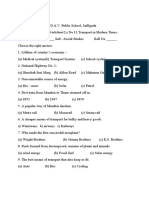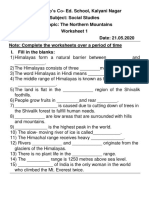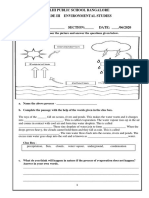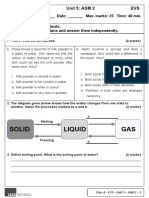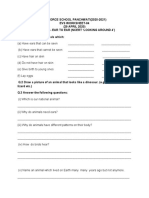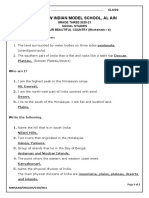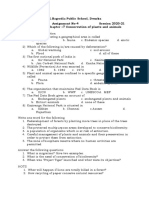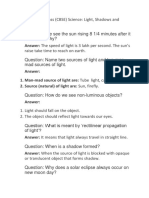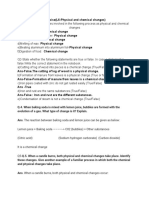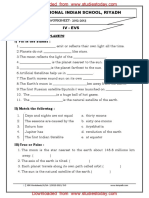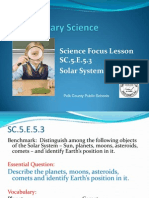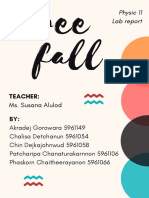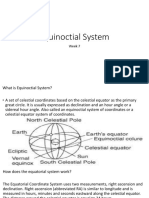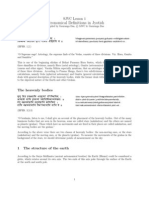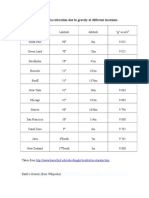SOLAR SYSTEM
Fill in the blanks.
1. Stars are just like the Sun.
2. Scientists who study stars are called astronomers.
3. From Earth we see the Sun rising in the east and setting in the west.
4. The Earth rotates on its axis.
5. The Moon is a natural satellite of the Earth.
6. The Moon has no light of its own.
7. Satellites send and receive signals.
8. At night our side of the Earth faces away from the Sun.
9. The Sun is a ball of burning gases.
10. The sun is the largest body and the centre
11. Sun is an important source of heat and energy
12. Earth is the only planet where life exists
13. The planet travel around the sun along their paths . These paths are knows as orbits .
14. Planets and moon have no light of their own. They reflect the sun’ s light
15. The solar system is made up of all the planets that orbit the sun
16. An astronomer Is someone who studies things in space
17. Mercury is the closest planet to sun and the smallest planet
18. Venus is the second closest planet and it is closest to Earth
19. Mars is similar to Earth
20. Jupiter is the biggest planet
21. Saturn is surrounded by rings
22. Uranus is the coldest planet
23. Neptune is the farthest planet from the sun
24. A day and night on earth lasts 24 hours
25. Astronomet uses __________________ to study space
26. 21st march and 23rd September equal day and night
27. Longest day is 22 june
28. Longest night is 22 december
Question and Answers
Q.1 Some stars seem brighter than others. Can you say why?
Ans : Stars that appear to be brighter than others might be bigger or closer to the Earth.
Q.2 What do we call the path of a planet moving around the Sun?
Ans Its orbit
Q.2 What is Pluto?
Ans : A dwarf planet
Q.3 How many days does it take the Moon to orbit the Earth?
�Ans 28 days
Q.4. What makes planets look bright at night?
Ans : Sunlight
Q.5. What does solar mean?
Ans : The Sun
Q.6 How many planets are there in the solar system?
Ans There are eight planets in the solar system.
Q.7 What is the difference between stars and planets?
Ans Stars have their own light. Planets and orbit do not have their own light. Stars are larger than
planets. Stars are very hot, and they are made of gases. Planets are cooler than stars and they can be
made of solids, liquids, gases, or a combination.
Q.8 Which are farther away from the Earth — stars or planets?
Ans Stars are farther away from Earth than the planets in our solar system.
Q.9 When do we see the Sun? When do we not see it?
Ans : We see the Sun in the daytime, when our side of the Earth faces the Sun. We do not see the Sun at
night, when our side of the Earth faces away from the Sun
Q.10 How do man-made satellites help us?
Ans Man-made satellites help us to know about the weather. They also help with communications
Q.11 what is lunar month ?
Ans : The time period required to complete one cycle from one new moon to the next is known as lunar
month ( 29 days )
Q.12 how many days Earth takes to orbit the sun ?
Ans The earth takes 365 days and 48 minutes and 46 second to orbit the sun .
Name the following.
1. The planet closest to the Sun Mercury
2. The planet farthest from the Sun Neptune
3. An instrument for studying stars telescope
4. A scientist who studies the stars astronomer
5. The largest planet Jupiter
6. The natural satellite of the Earth the Moon
7. The increase and decrease of light on the Moon the phases of the Moon
8. A man-made complicated machine which orbits the Earth a satellite
True or False
� 1. The axis is an imaginary line passing through the equator FALSE
CORRECT ANSWER : The axis is an imaginary line passing through the north and south poles
2. We get our seasons because of the way the earth tilts TRUE
3. During their summer , the Earth poles get no sunlight at all FALSE
CORRECT ANSWER : during winter , the Earth poles get no sunlight at all
4. We get our year because of the time it takes for the earth to turn around its axis FALSE
CORRECT ANSWER : A year is the times it takes the Earth to revolve around the sun
Q.Put these planets in order, starting with the one closest to the Sun. You need to unscramble the
letters first. MERCURY VENUS EARTH MARS JUPITER SATURN URANUS NEPTUN
(My Very Educated Mother Just Served Us Noodles )
ANS : MERCURY VENUS EARTH MARS JUPITER SATURN URANUS NEPTUNE
Q. Draw lunar eclipse
Q. Draw solar eclipse

